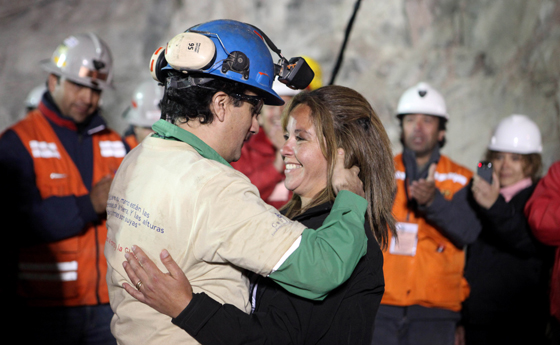The whole world let out a collective sigh of relief after the last of the miners was rescued in Chile. With a safe recovery behind us, we can now look back on the crisis management lessons learned during the 69 days that 33 men feared for their lives while trapped a half-mile underground. The Chilean government showed not only leadership but remarkable communications savvy throughout the ordeal. In many ways, it is quite similar to the BP disaster.
Here are eight lessons to remember.
1. Take Responsibility
In stepping in to take over the rescue operations, Chile's President Sebasti?n Pi?era took an enormous calculated risk. The decision could have been influenced by criticism of his government's slow response to the March earthquake near the city of Concepci?n. Whatever the rationale, the Chilean actions contrast sharply with what we saw in the United States post-Hurricane Katrina, and after the BP disaster, during which the government chose to leave BP in charge. For Pi?era, it clearly paid off.
2. Manage Expectations
Remember the initial estimates that the miners might be out by Christmas? Whether simple caution or a communications strategy, this was a masterstroke. It took some of the pressure off, enabled the government to succeed beyond all hopes and made authorities look competent in the process.
3. Have a Plan
Early on, the Chilean government communicated a Plan A and a Plan B for rescue in a clear, methodical way. It looked organized and in control. Compare their performance with that of BP, which lurched from one solution to the next, even crowdsourcing ideas for stopping the spill in a way that suggested uncertainty and incompetence.
4. Accept Help -- But Maintain Control
A fascinating aspect of the rescue was the technical help and advice the government sought from private companies and experts at NASA and elsewhere. The authorities made it clear that no effort would be spared to guarantee a safe resolution to the crisis. But they also kept tight control over communications, ensuring that the government was the chief source of updates. This is the first rule of crisis PR.
5. Sweat the Small Stuff
One of the biggest stories around the rescue operation was the focus on the smallest details of the plan, from the construction of the tube to the monitoring of each miner's health. The government's meticulousness conveyed not only competence, but caring.
6. Be Transparent
The Chilean PR machine was proactive, consistent and transparent in updating the media. They never seemed to obscure facts or delay disclosure, which often happens when the pressure is on.
7. Be Social
The government used social media to support its communications, setting up a Flickr page of photos that documented every dramatic moment as the miners began to emerge into the light.
8. Be There
Chile's minister of mining was at the site virtually around the clock, and President Pi?era appeared frequently as operations shifted into high gear. Sure, the head guy can get updates from his office, but when lives are at stake, the presence of leadership really matters. Sometimes you just have to be there.

